All About Woodpecker Nests and Eggs
Updated: Jan. 26, 2024
Wondering if you've found a woodpecker nest? Learn where they build nests and how many eggs they lay. Plus find out if they will use nest boxes.
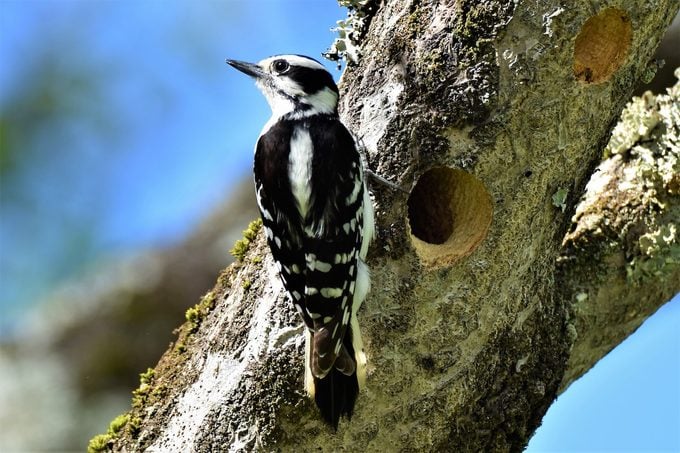
Think of woodpeckers as skilled carpenters that happen to have feathers. You won’t find a woodpecker nest nestled in a forking tree branch or on a ledge. They excavate tree trunks and thick branches to create cavities large enough for them to lay eggs in and raise their brood.
If you’re in the United States, the woodpecker nest you’re most likely to come across belongs to the downy woodpecker. Other common species include: pileated woodpeckers, red-headed woodpeckers, and red-bellied woodpeckers.
What Do Woodpecker Nests Look Like?
There are many different types of bird nests, such as cup nests, platform nests and cavity nests. Woodpecker nests are considered cavity nests. The size of the cavity is usually at least the length of the woodpecker’s body. For a larger woodpecker, like the pileated woodpecker, a cavity nest can be up to two feet deep!
How Do Woodpeckers Build Their Nests?
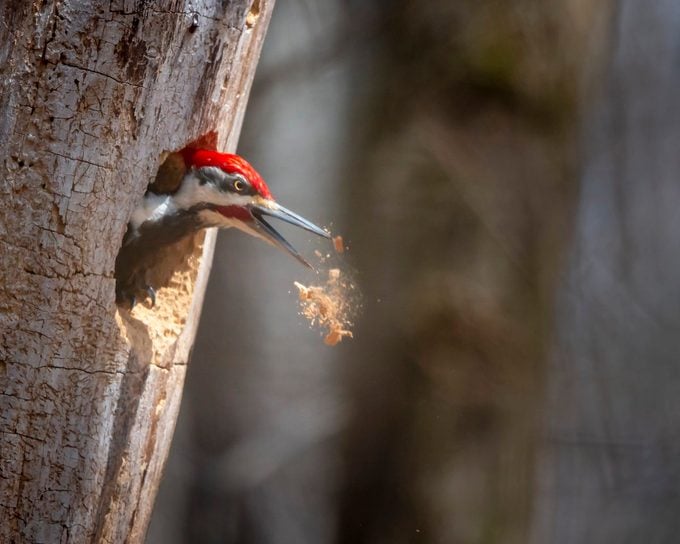
They use their incredibly strong, shock-absorbing beaks to hammer through wood. Woodpeckers bore their nest holes straight in and then down. Inside the nest cavity, you won’t find any added nesting material, like twigs, soft grasses or feathers. But during the excavation process, wood chips fall into the nest cavity and create a soft bed for eggs and future fledglings.
What does a baby woodpecker look like?
Where Do Woodpeckers Build Their Nests?
Woodpeckers typically prefer a large trunk or branch of a diseased or dying tree for their nests. Trees with heart rot are particular woodpecker favorites because the fungal disease softens the trees’ centers—perfect for chiseling out a cavity nest.
Woodpeckers have also been known to drill cavity nests into telephone poles, fence posts and even the sides of houses though that’s much more rare.
Gila woodpeckers nest in saguaro cactuses.
Discover mind-blowing woodpecker facts you should know.
Do Woodpeckers Use Nest Boxes?
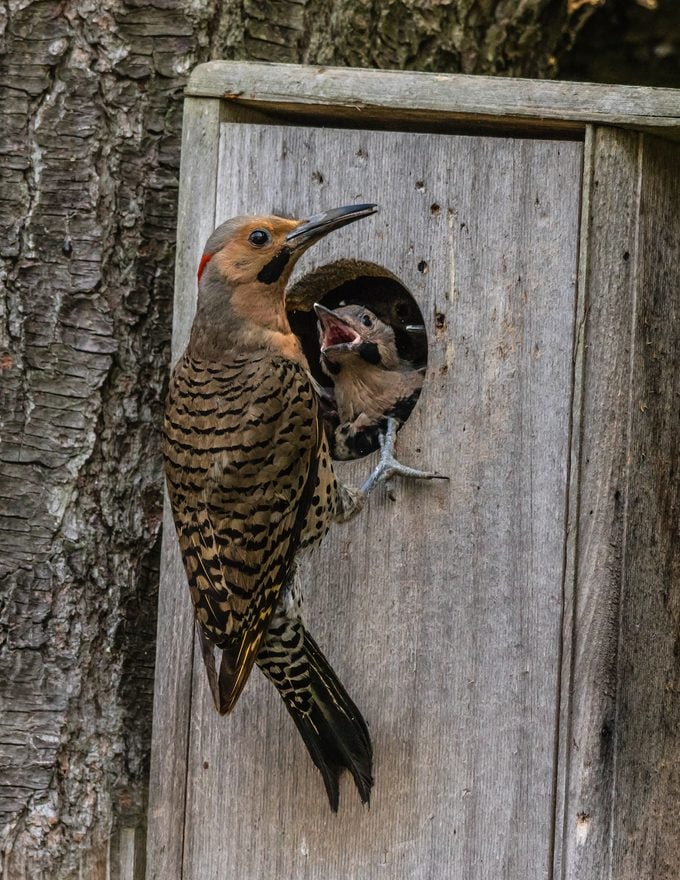
Many woodpecker species will use nest boxes, especially if there aren’t other good options around, like dead trees or branches. Northern flickers are especially willing to use nest boxes. Their population is in decline due to competition with starlings for nesting sites and natural habitat destruction.
If you’re having trouble convincing woodpeckers to use your nest box, try lining it with wood chips to make it more enticing to them (and less enticing to other species). It’s also helpful to attach the nest box to a fence post, pole or tree that’s at least six feet off the ground—but higher is better for most woodpeckers.
Do Woodpeckers Reuse Their Old Nests?
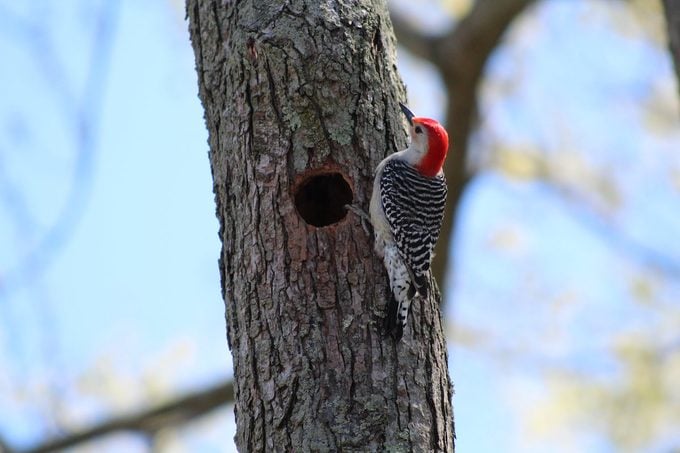
Some species, like downy woodpeckers and red-bellied woodpeckers, create brand-new cavity nests every year, while others like northern flickers and red-headed woodpeckers return to the same ones if they can. After the nesting season ends and the cavity nest is left behind, other animals will often enlarge and re-use the nest cavities for their own needs.
For example, squirrels use vacant woodpecker nests for shelter or food storage. And other bird species, like bluebirds and swallows, can’t excavate their own cavity nests and move into empty woodpecker nests instead.
When Do Woodpeckers Lay Eggs?
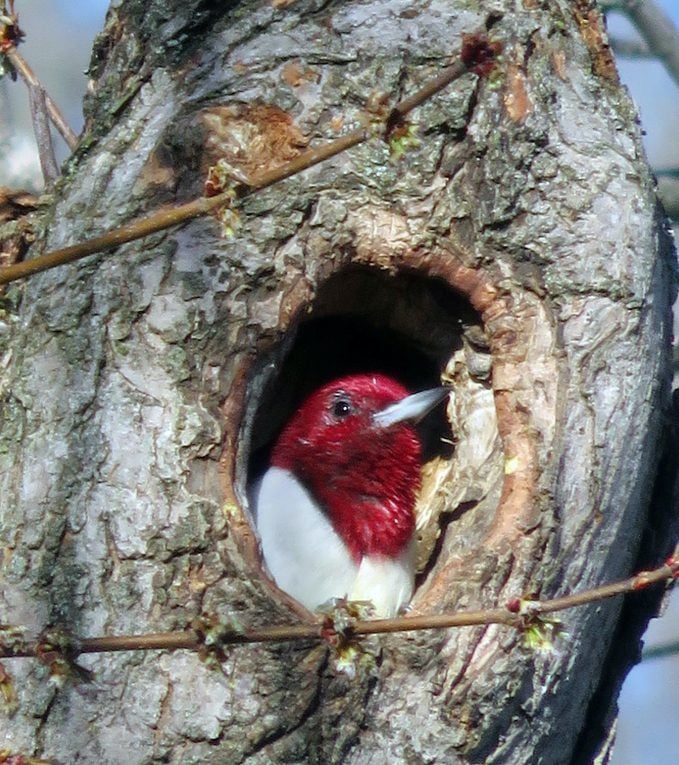
Most woodpeckers lay their eggs in spring and early summer but it varies from species to species. The number of eggs they lay also differs depending on species. Overall, the average woodpecker brood is usually anywhere between three and seven eggs. Across woodpecker species, eggs tend to be white and both parents share incubation duties.




















